Maackia 005: Finding balance
Hi! I’m a recovering Nathan Langley and this is Maackia, a monthly newsletter on the meaning of life (you did remember to bring your towel, right?).

Paying attention is important. I am a strong proponent of cultivating curiosity (moss! lichen!). But there is so much screaming for attention day to day that I find myself drained before I even get to the things I want to pay attention to. I want to read more, write more, and use my camera more. I want to enjoy gardening. But all of these things require focus. They require directed energy, which I am severely low on and find difficult to recuperate. Why? I was reading a recent post at the marginalian that offered a clue:
James distinguished between two kinds of attention: “voluntary,” in which we willfully aim our focus at a particular object or activity with concerted effort, and “passive,” which approximates the Eastern notion of mindfulness — an effortless noticing of sensations and phenomena as they naturally arise within and around us, our focus drifting by its own accord from one stimulus to another as they emerge. James listed this “passivity” as one of the four qualities of mystical experiences. But it is also the most direct valve between the mystical and the mundane — the type of attention that places us in our most creative states.
In the epochs since James, scientists have termed this effortless attention “soft fascination.” It is at the root of our mightiest antidote to depression and our most generative mindsets, and it comes to us — or we to it — most readily in nature.
Soft fascination seems so obvious I feel silly that I haven’t heard about it before. I love staring out the kitchen window! I don’t look at anything in particular when I do it: trees swaying in the wind, clouds passing by, the resident rabbit(s) named Dandy getting its fill of clover or dandelion each morning. A formal garden is in view, but it needs a complete rework - that’s not the type of attention I need to cultivate right now (or do I?). But a garden could be what you need, particularly if you are living in a town where you aren’t surrounded by natural areas like I am.
Balance. That’s what I’m missing! I need to spend more time in a way where my attention can be free to wander on its own. Craig Mod describes the type of directed attention I want to cultivate as going “huh”. But he also rightly points out that going “huh” needs to be followed by “alright”. You have to return to a state of being in order for the next “huh” to present itself. Otherwise the system breaks down.
The point being: Looking closely is valuable at every scale. From looking closely at a sentence, a photograph, a building, a government. It scales and it cascades — one cognizant detail begets another and then another. Suddenly you’ve traveled very far from that first little: Huh.
I’d say that that huh is the foundational block of curiosity. To get good at the huh is to get good at both paying attention and nurturing compassion; if you don’t notice, you can’t give a shit. But the huh is only half the equation. You gotta go huh, alright — the “alright,” the follow-up, the openness to what comes next is where the cascade lives. It’s the sometimes-sardonic, sometimes-optimistic engine driving the next huh and so on and so forth.
It’s the meditative process! Breathe. A thought arises. Acknowledgement. Thanks. Letting go. Breathe.
Easier said than done.
I think gardening can offer a path towards better balance. I would even say that gardens have balance built into their being. To start, they require attention and action (don’t ever let anyone tell you that they don’t). But that’s ok because your directed focus towards your garden is balanced by the ability to sit within the space you have nurtured. A space specifically designed by you! The stillness created by being present in your garden is the setup needed for the next “huh” to arrive - to start building momentum in a more balanced way.
There are, of course, a few obstacles to overcome in this pursuit. The first hurdle is getting over the word gardening itself. You don’t necessarily have to be a “gardener”, but you must garden. You have to spend time working in your space. This doesn’t mean you have to spend all of your free time there - you are free to make your space as simple or complex as you would like - but you do have to use some of your directed energy within it. The second hurdle is realizing that there isn’t an ideal “end state” for you garden. There is no point where you are truly done. But that is the point! We aren’t creating a painting. We are creating a living, breathing space that brings balance into our lives.
The nice part about all of this is that your garden won’t judge you based on how well you do, what you need right now, or how those needs may change in the future. The plants will just adapt and continue to be their happy little selves. I think that will be enough for me right now. Little, continuous steps. Then remember to breathe.
the recipe
Textures
This month I wanted to focus on different textures. The design is made up of two main blocks within a 5 x 2m area. The first block has Calamagrostis as its main structural component in the centre and is surrounded by Sanguisorba, Leucanthemum, Sedum, and Coreopsis. Each plant has a different flower and leaf texture from the next.
The second block is made up of Helenium and Stachys. Both plants are in the same sized area as Calamagrostis in the first block and act as a palate cleanse.
Ingredients:
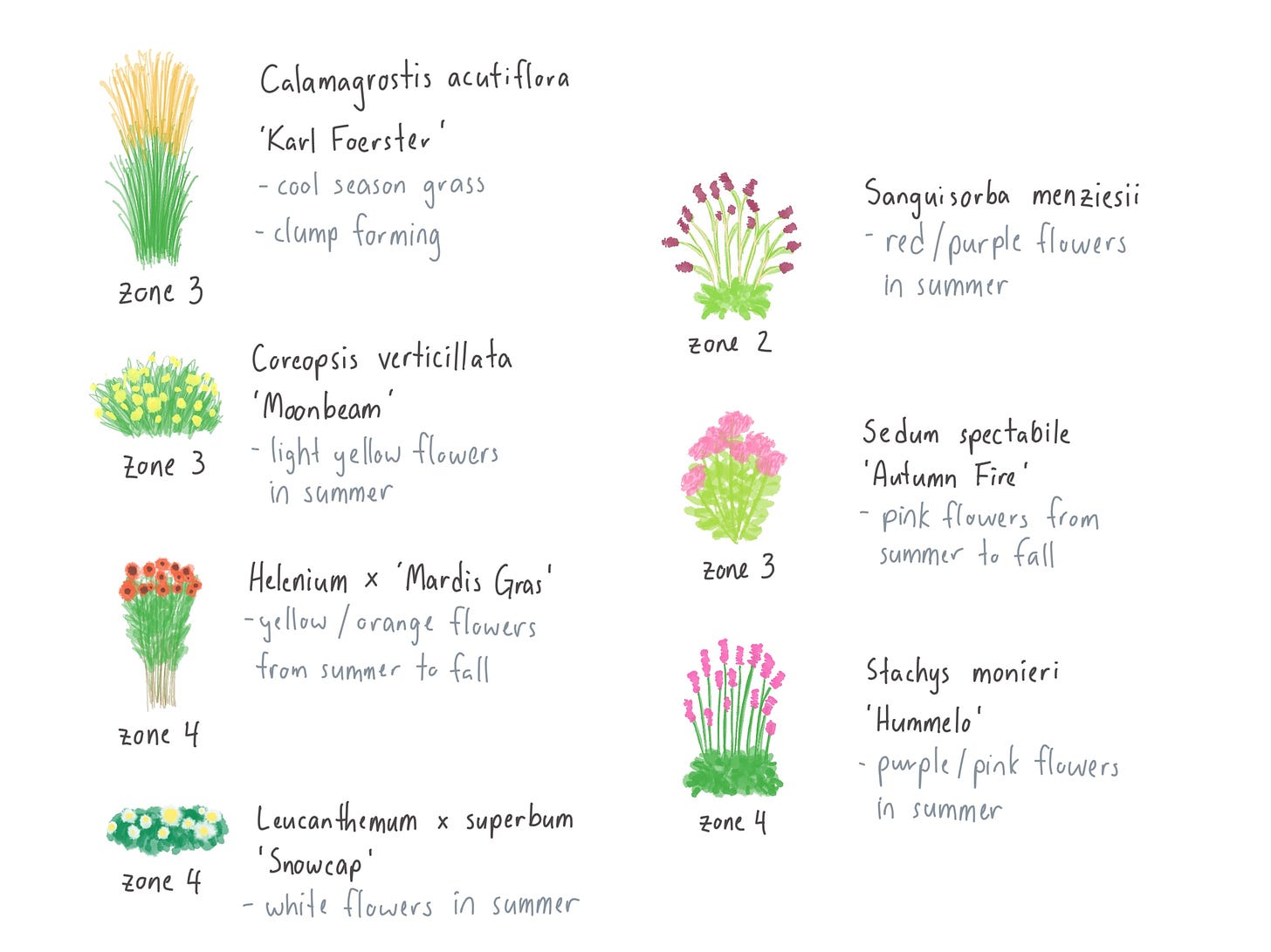
Seasons:
Overview
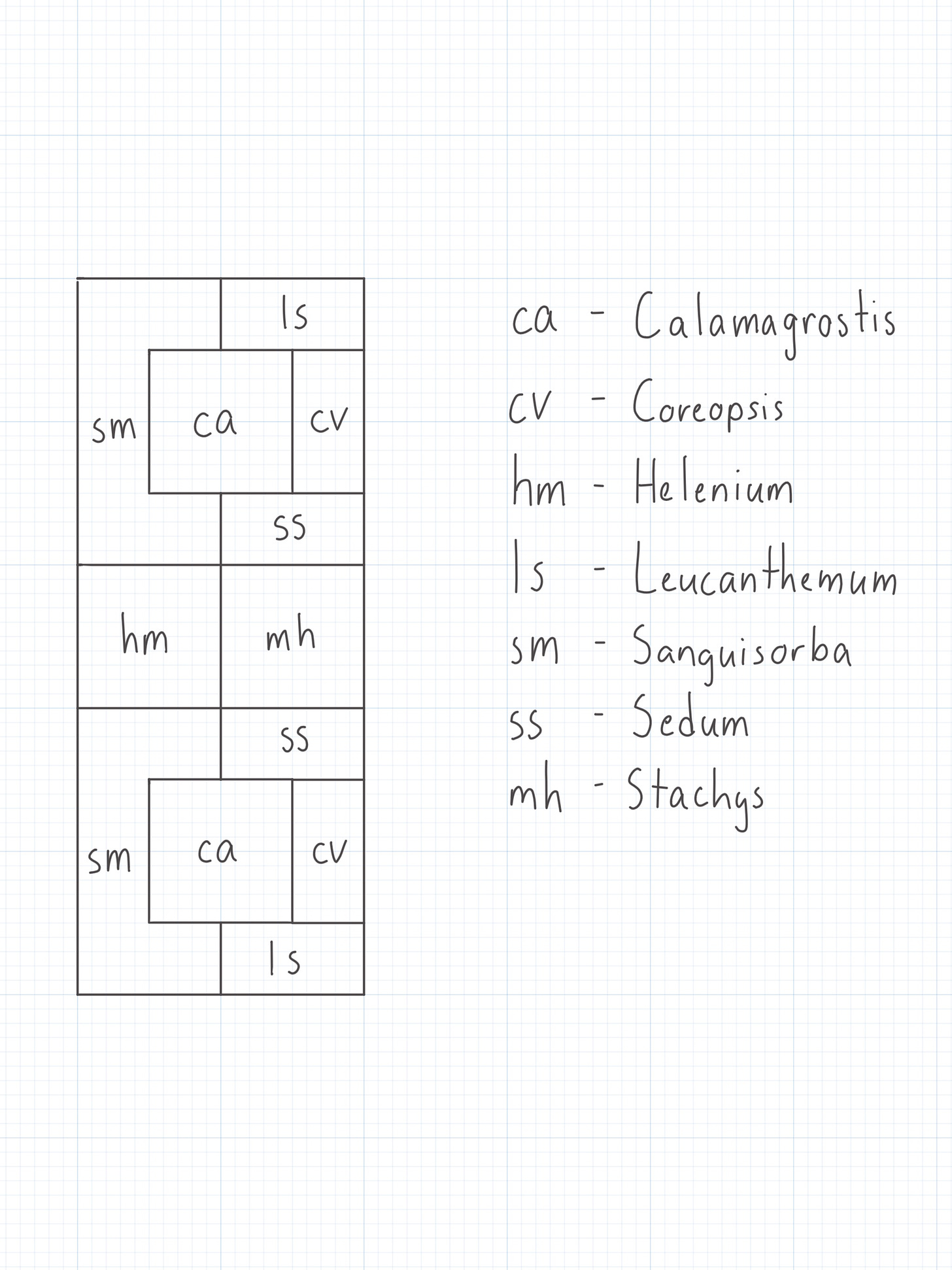
Spring
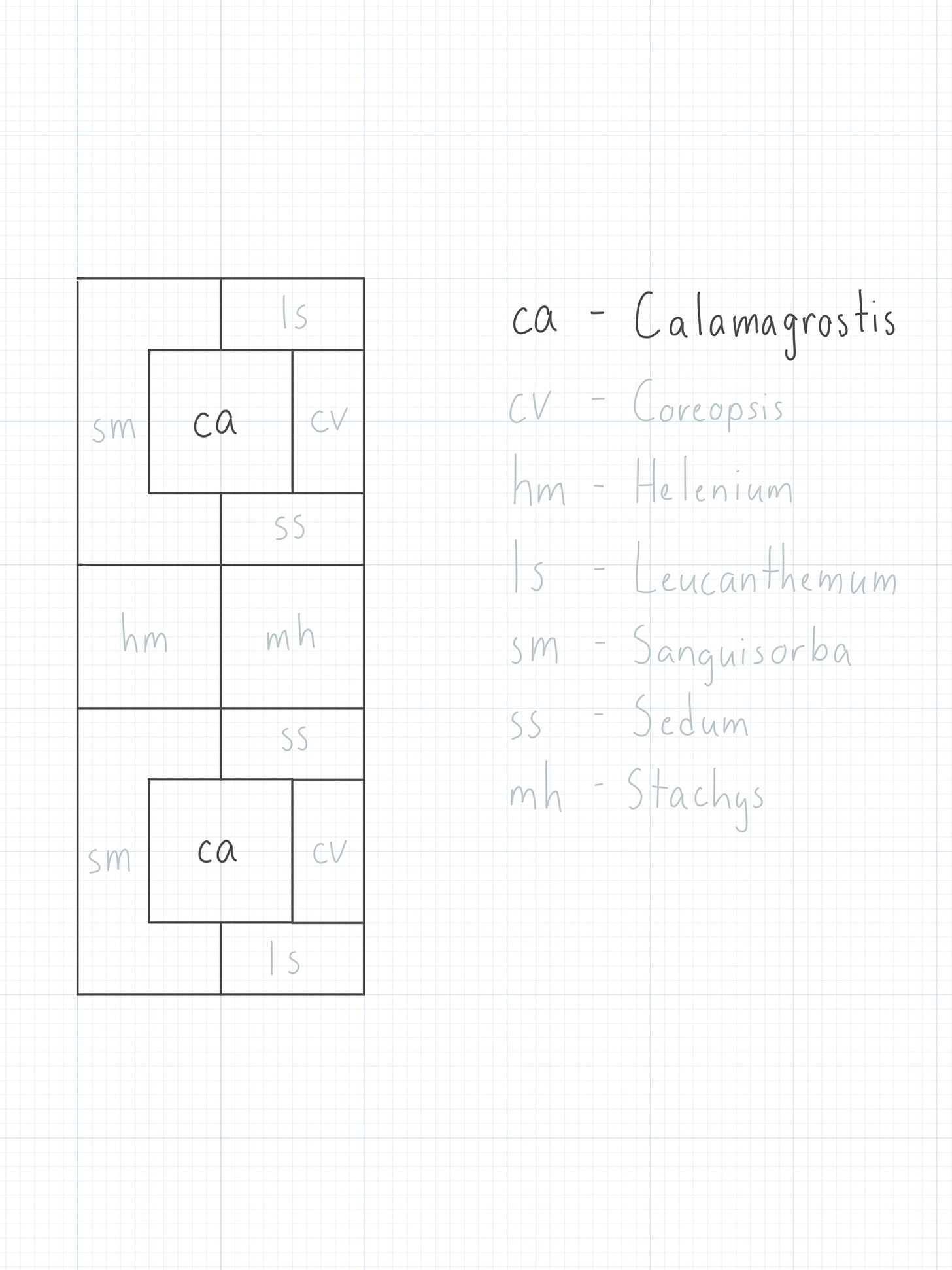
Calamagrostis will be growing strong in spring as it is a cool season grass (grows in spring and fall; goes dormant in fall) but otherwise there isn’t much going on flower-wise. If you want more floral interest at this time of year, feel free to add different bulbs in and around the perennials. Otherwise enjoy the different leaf textures as each plant wakes up and begins to grow.
Summer
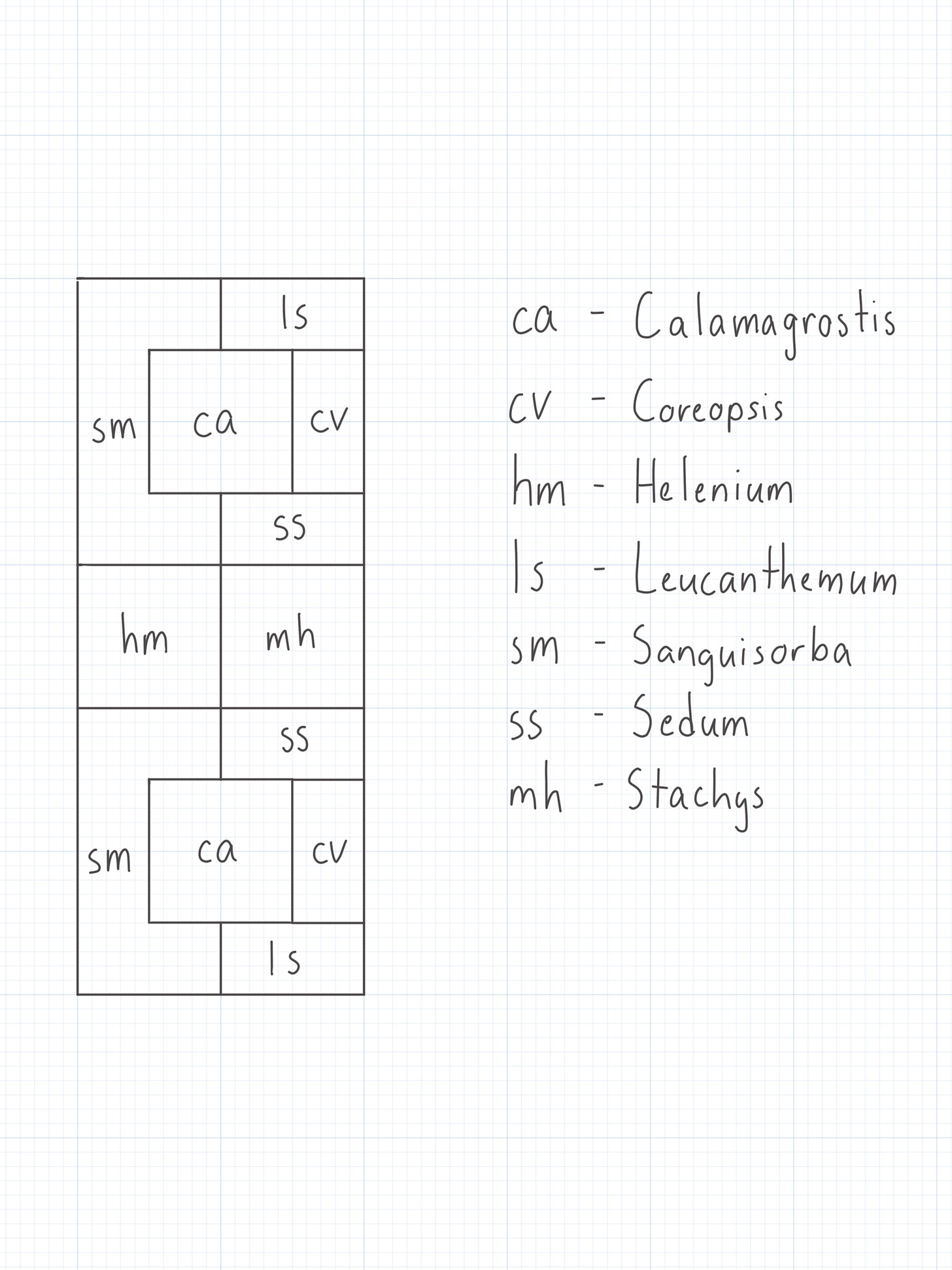
Summer is the main show for this garden recipe with every perennial flowering at some point. The colours will range from a light yellow with Coreopsis all the way to a red/pink with Sanguisorba and a purple/pink with Stachys.
Fall
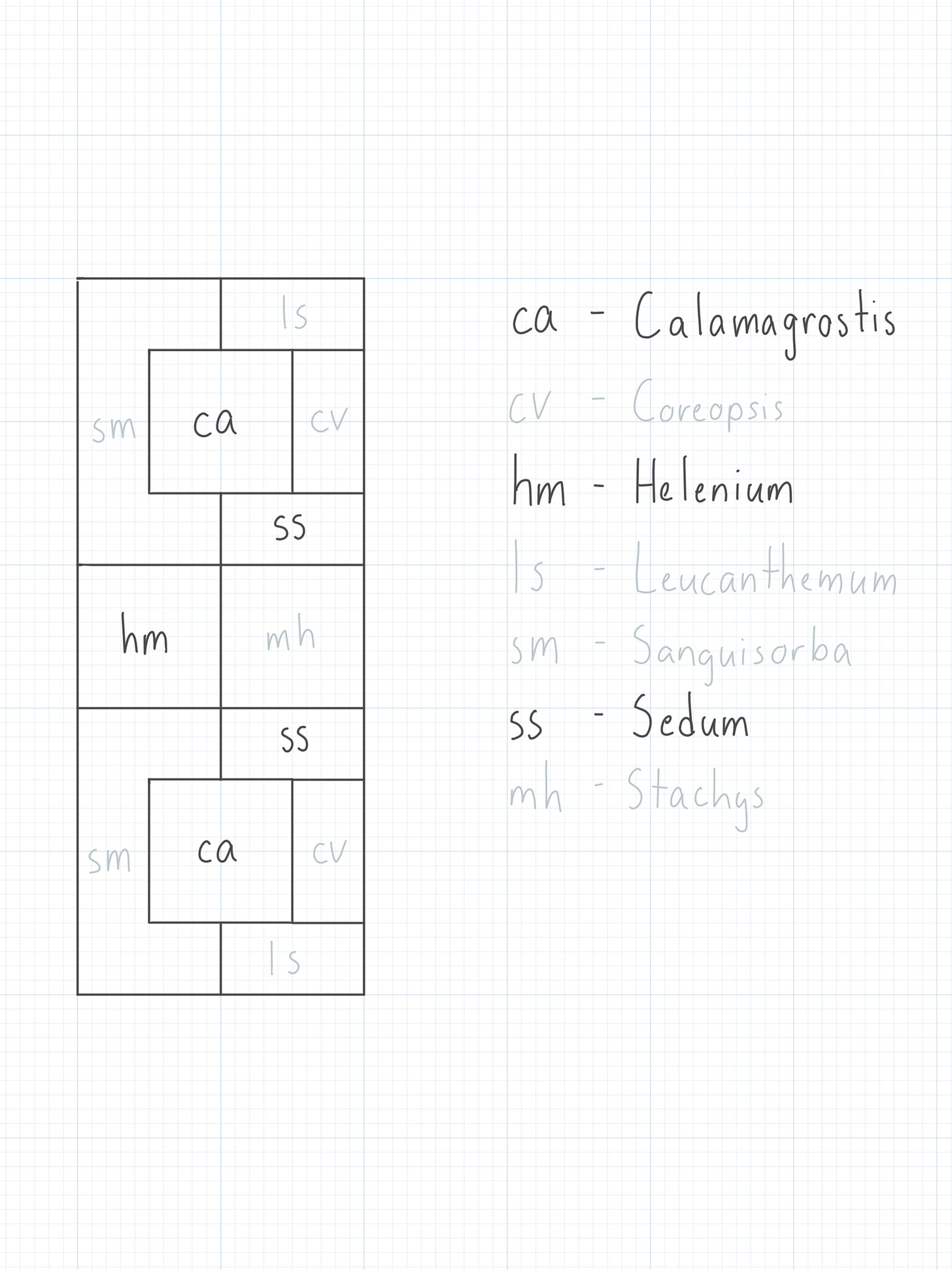
Fall returns to a somewhat subdued state, relying mainly on leaf texture for interest. Calamagrostis will be growing again, which will add some green as the other perennials begin to go dormant. Helenium and Sedum will also add a splash of colour here and there.